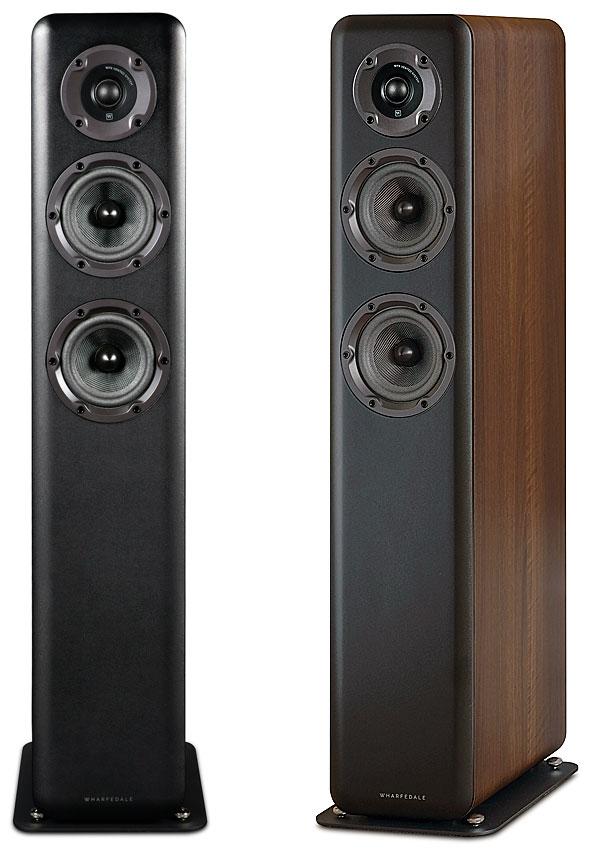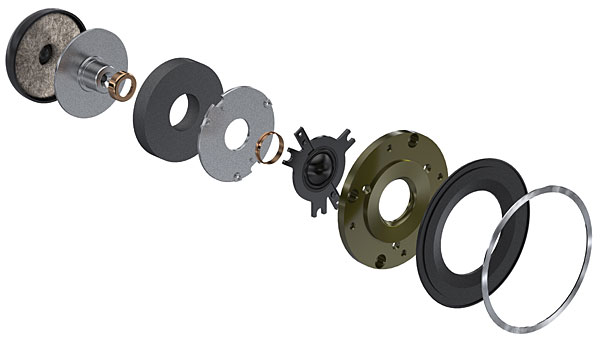Wharfedale D330 Loudspeaker

 With its D series, Wharfedale yet again aims to redefine the art of the possible in budget loudspeaker design
With its D series, Wharfedale yet again aims to redefine the art of the possible in budget loudspeaker design
There's something very special about a bargain hi-fi product able to defy expectations with a surprising level of performance. It stood the original Wharfedale Diamond speakers in good stead in the early 1980s, and continues to be a hallmark of the range to this day, in the Diamond 11 series [HFN Dec '17]. So it's intriguing to see the company launch another budget speaker series to run alongside the Diamond 11s, in the form of the D300 lineup.
Topped by the speakers here, the D330 floorstanders, at just £499 in black, white, rosewood or walnut finishes, it now gives the Wharfedale buyer of modest means a choice of two ranges, and two styles. The Diamond 11s were only launched at the Munich High End Show in 2017, with curved cabinets for greater stiffness and resonance-proofing, and with a lineup running to eight models – three standmounts, the same number of floorstanders and two centre speakers – at prices up to £1000/pr.
 With just four models in the D300 range, it offers an alternative to the buyer – you can have the sleek-looking Diamond 11s, with a very classic look, or the rather more industrial-influenced D300s, with their more contemporary styling.
With just four models in the D300 range, it offers an alternative to the buyer – you can have the sleek-looking Diamond 11s, with a very classic look, or the rather more industrial-influenced D300s, with their more contemporary styling.
Rough Diamond
But then the allure of the entry-level for a brand isn't hard to understand. After all, the original Diamond shook up the hi-fi market by offering frankly ridiculous levels of performance from a design standing just 24cm tall, costing £65 a pair and looking a little rudimentary (at least by modern standards, of which more later).
Wharfedale has rolled on with its programme of excellent small speakers for 35 years or so, despite going through various changes of ownership. At which point, enter the Wharfedale D300 lineup, described as its 'latest most advanced series of speakers yet' – just in case you were wondering. The style one would call radically different from the Diamonds if it wasn't for the fact it's more notable for being reminiscent of the Q Acoustics speakers also crafted by industrial designer Kieron Dunk. He's worked on products for Wharfedale stablemates Mission and Quad in the past, as well as Denon and Marantz, but it's safe to say the D300 is very much using his current design language!
That means cabinets with radiused joints, both where the box panels meet each other and between the baffle and the main enclosure, designed for strength and also to control any diffraction effects from sharp corners. While the driver fixings are exposed for a more 'industrial' look than that of the elegant Diamond 11s, this does allow the use of individual grilles for each drive unit, which simply push on and then sit just proud of the baffle. It's the kind of thinking more usual in much more expensive speakers, and to these eyes rather more appealing than the ubiquitous full length grille found on many a speaker.

Keeping Kevlar
Standing 94cm tall, the D330 is a two-and-a-half-way floorstanding design, using a soft-dome 25mm tweeter and a pair of 13cm woven Kevlar drivers – one for mid/bass, the other for bass. That material is one Wharfedale now seems to be making its own, especially as the most celebrated user, Bowers & Wilkins, is now shifting completely from the iconic yellow cones to its latest silver-grey Continuum construction. In the best basic black used in these speakers the Kevlar weave adds a touch of interest to the look of the drivers, along with its structural advantages.
Behind the cone, the bass units use a basket ribbed for greater rigidity, with space behind the cone to avoid any distortion-creating reflections, while the long-throw 'motor' has a new one-piece pole-plate with a copper cap, designed to reduce inductance and control the magnetic flux. The magnets are a ceramic formulation used in Wharfedale speakers for over 50 years, while the lightweight cone surround is made from foamed polyether.
The tweeter, as the legend on its surround tells us, is the company's 'Wide Frequency Response' design, vented to the rear to avoid compression effects when working hard. It sits in a dished mount to control dispersion, inside a sub-chamber designed to isolate it from acoustic interference from the woofers. The bass is tuned with a variation on the 'Slot-Loaded Distributed Port' used in the Diamond 11 Series, designated P-EQ (Pressure Equalisation). It uses a downward-firing vent with a port tube shaped at each end to reduce turbulence effects such as 'chuffing'.
























































